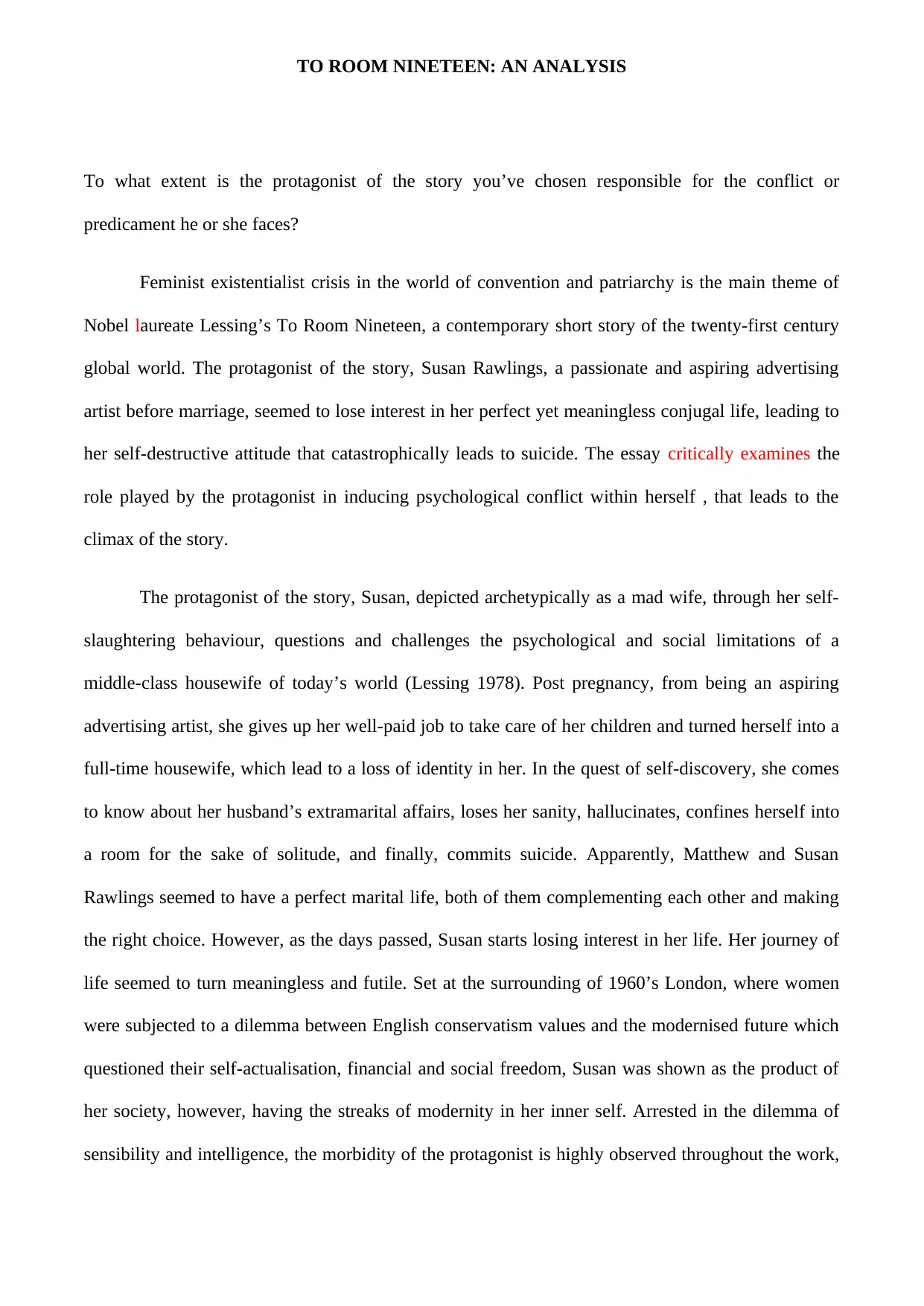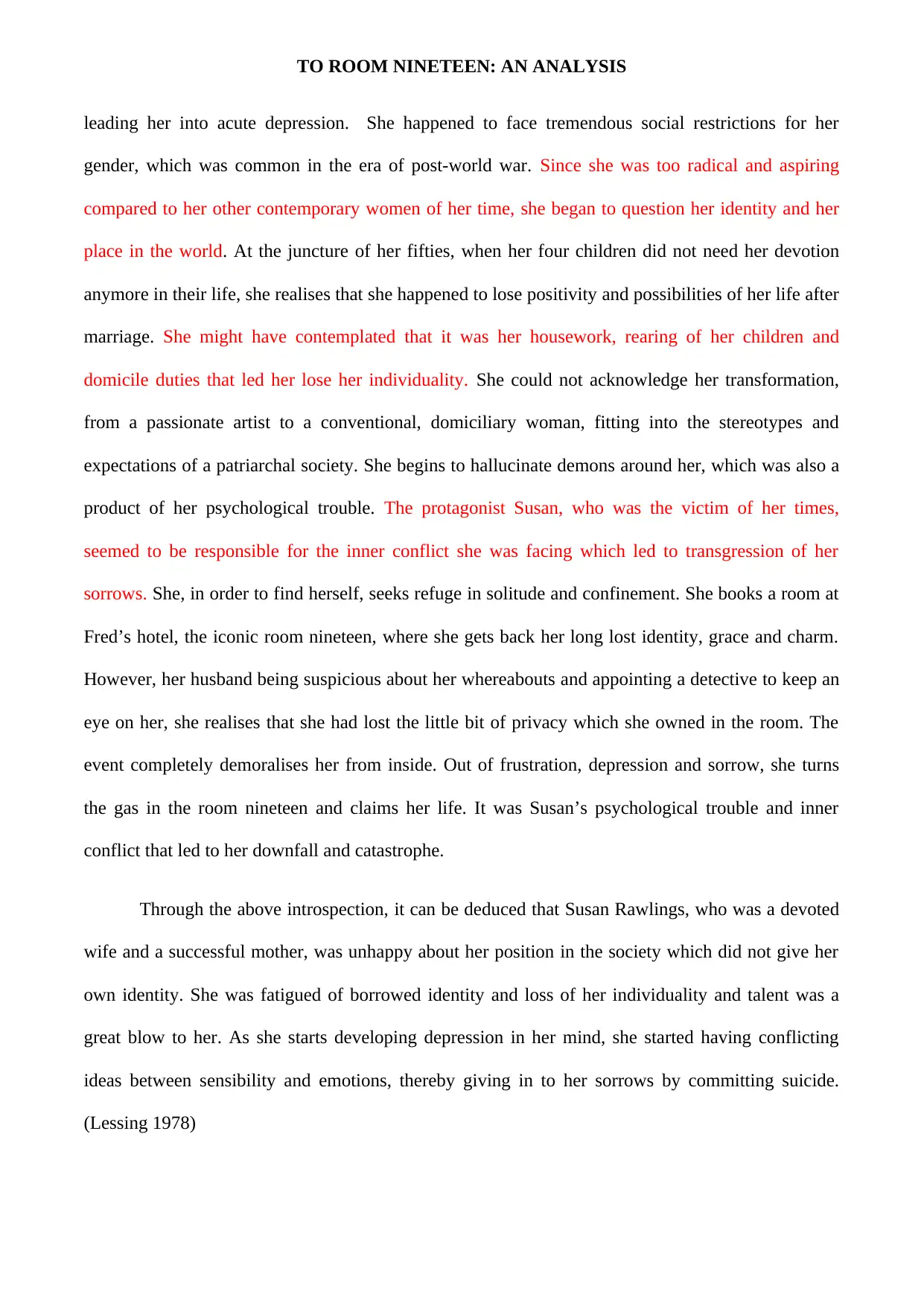Analyzing Susan's Role and Responsibility in 'To Room Nineteen'
VerifiedAdded on 2023/04/21
|4
|856
|324
Essay
AI Summary
This essay provides a detailed analysis of Susan Rawlings, the protagonist in Doris Lessing's 'To Room Nineteen,' and explores the extent to which she is responsible for the conflict and predicament she faces. It delves into the feminist existentialist themes present in the story, highlighting Susan's journey from an aspiring artist to a disillusioned housewife trapped in a patriarchal society. The analysis examines her psychological struggles, including her loss of identity, hallucinations, and eventual suicide, attributing her downfall to the inner conflict between her societal role and her individual aspirations. The essay argues that Susan's inability to reconcile her desires with the limitations imposed upon her leads to her tragic end, positioning her as both a victim of her time and an agent of her own destruction. Desklib provides past papers and solved assignments for students.
1 out of 4







![[object Object]](/_next/static/media/star-bottom.7253800d.svg)